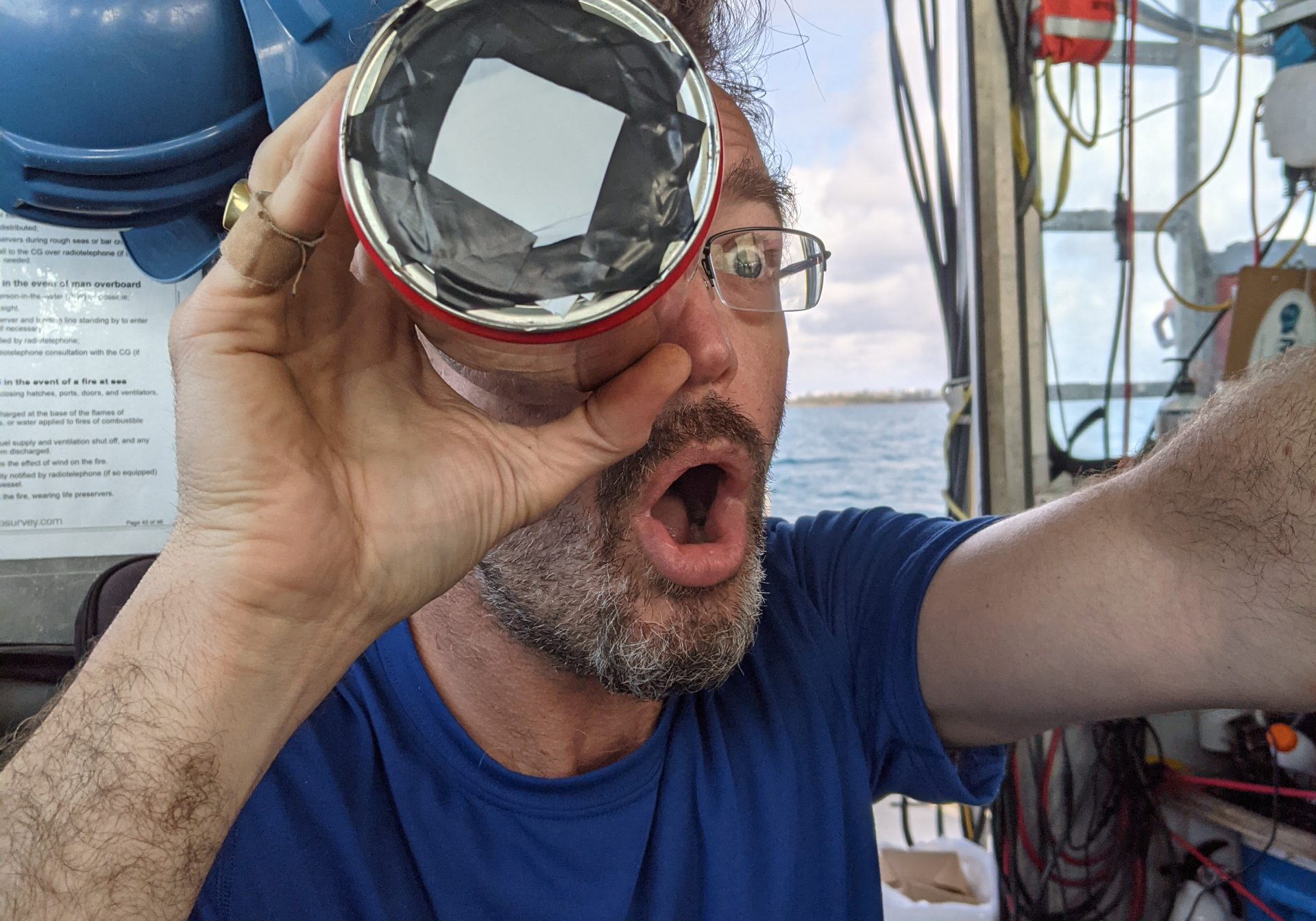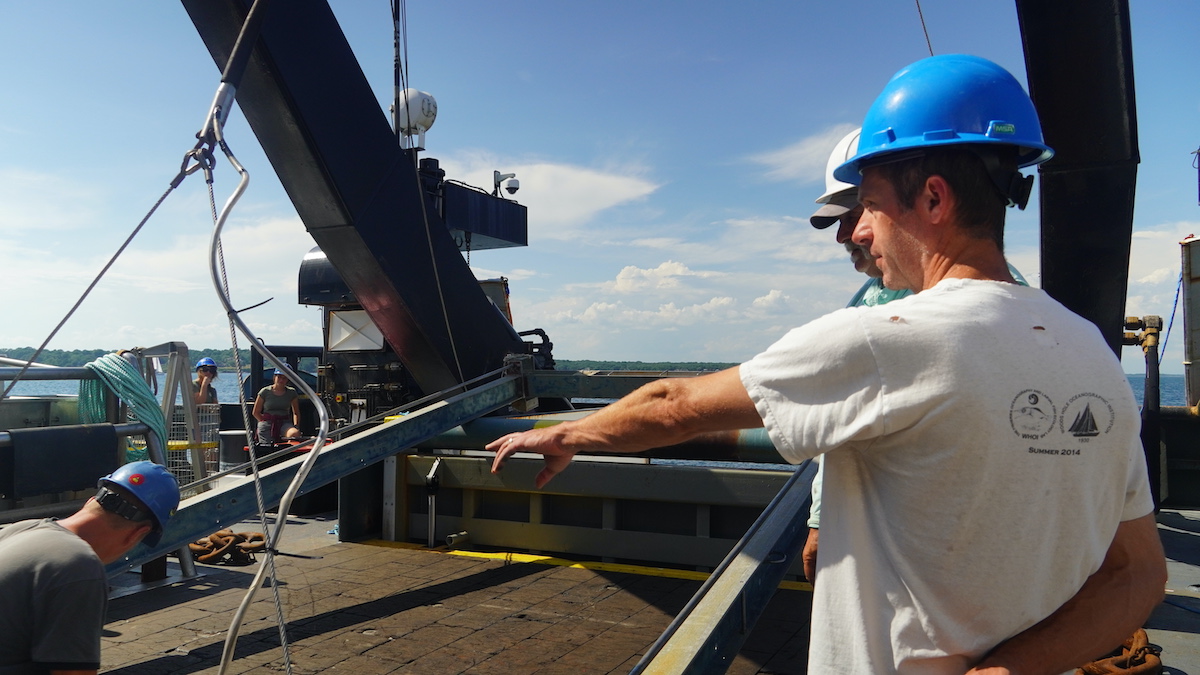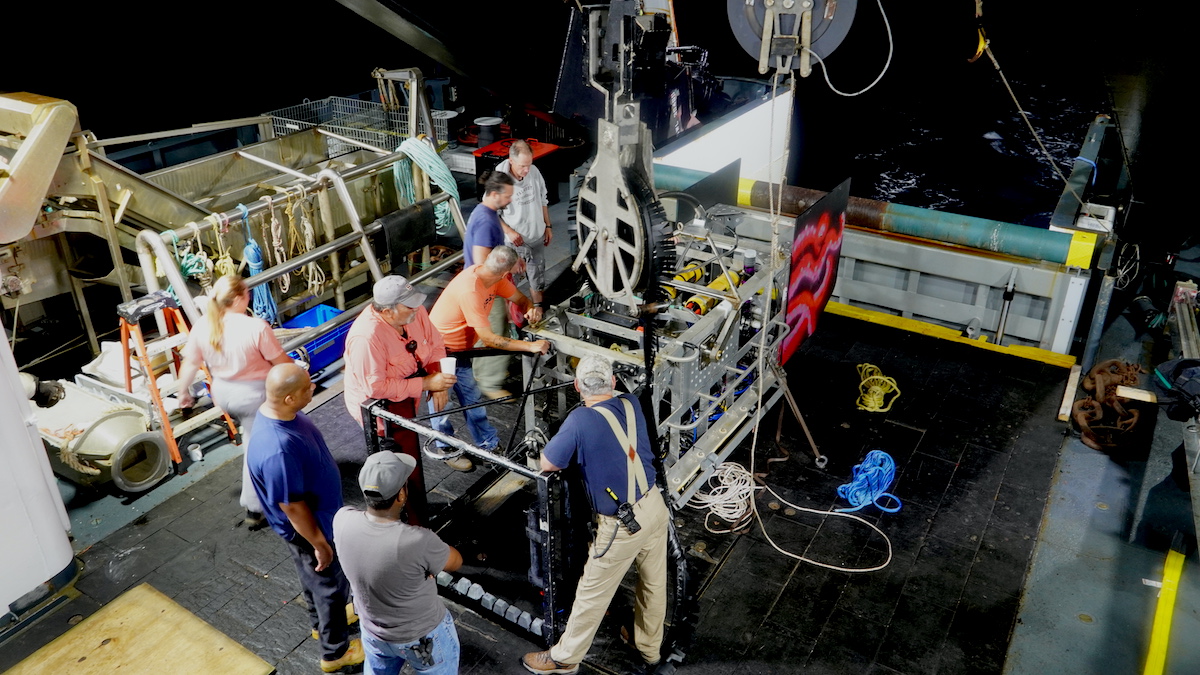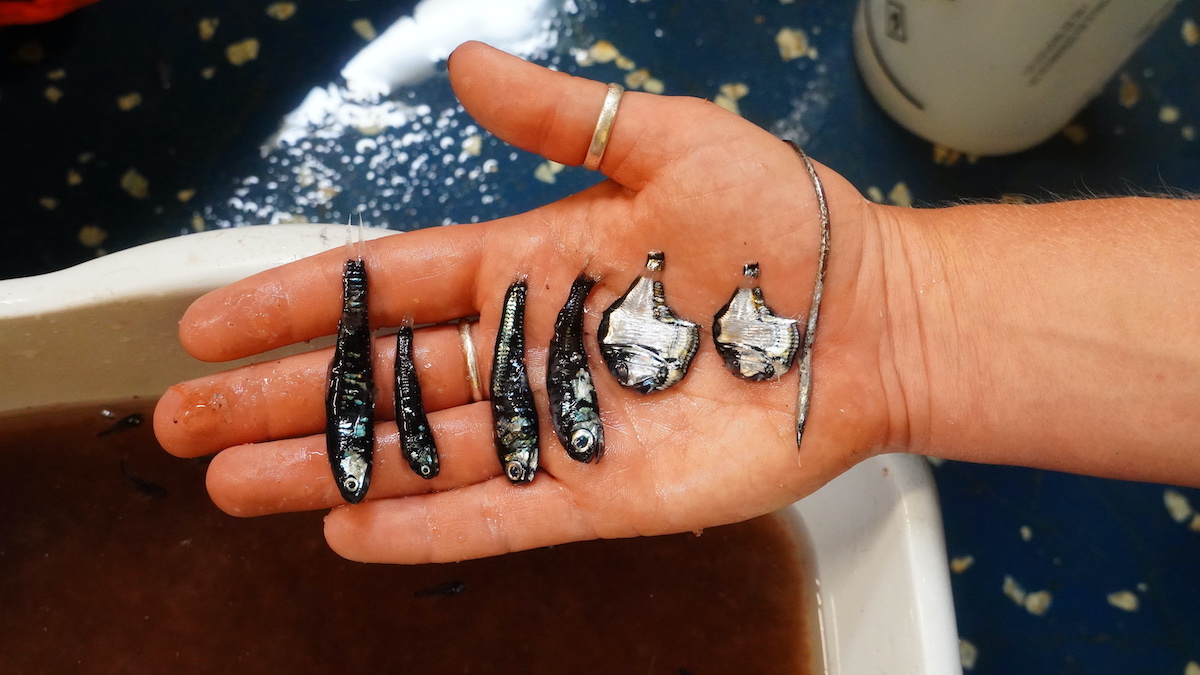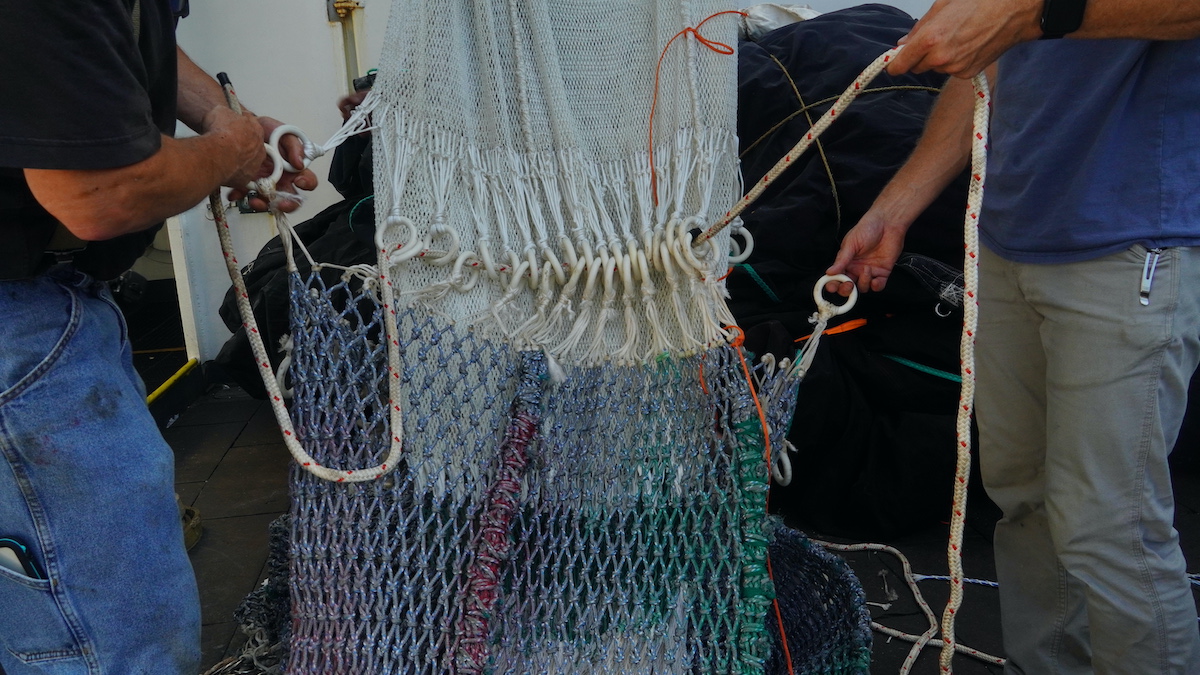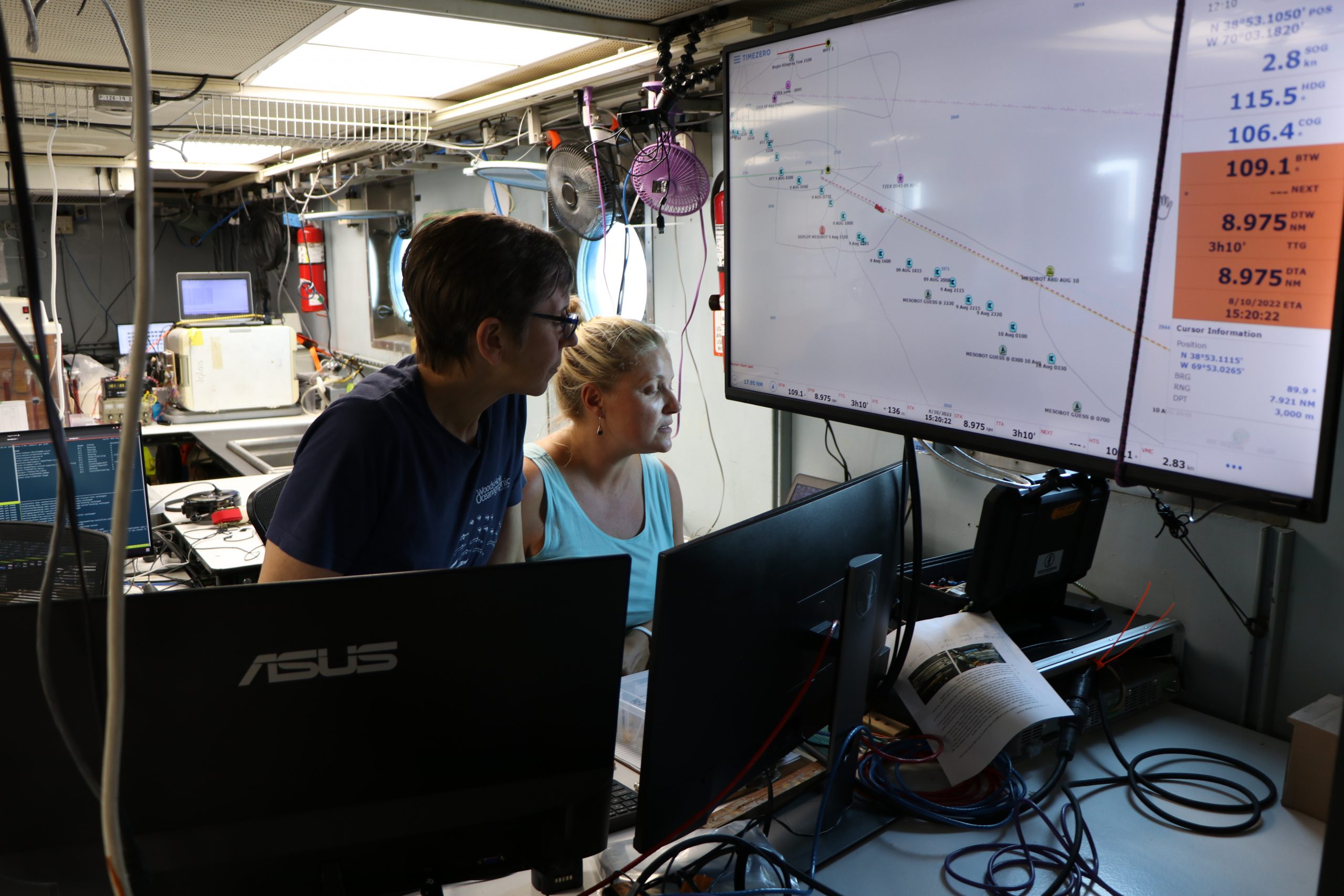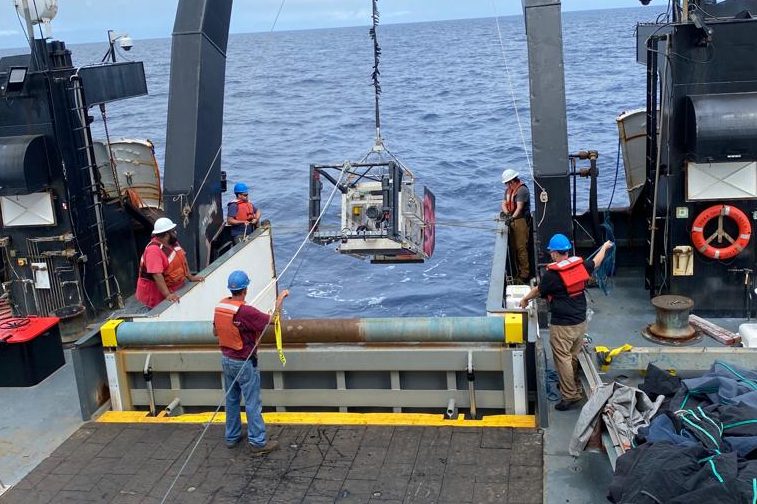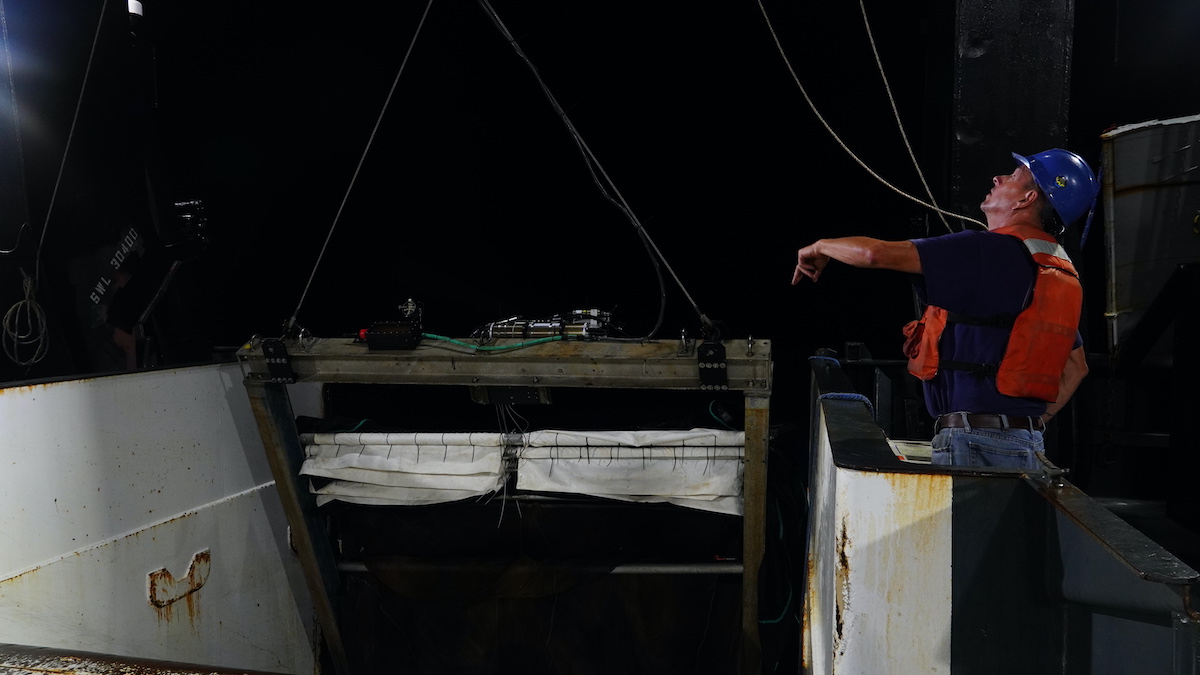Field Notes: Adapting to Rough Seas March 19, 2021
After yesterday's pre-dawn test of Mesobot's radiometer, Bermuda’s seas were just rough enough to prevent a deep water deployment the following day. The team tried several different sites around the island, but the swells were just too big. Throw a bunch of engineers and scientists together on a boat, however, and you’re bound to come up with an alternate plan. The team ultimately decided to try for shallower water where they could count on calmer seas—but the trouble with shallow water during the daytime is that it’s not easy to get down to depths dark enough for the radiometer to record meaningful data. Usually, anything shallower than 300 meters of water is just too bright. What do to?
Allan Adams had one idea. On the fly, he invented a workaround—put an optical “muffler” over the radiometer and simulate darker conditions. It was decidely low-tech, hacked together with an empty Illy coffee can, a screwdriver, a trash bag, and some electrical tape—but allowed the team to get useful readings in 17 meters of water. Mesobot successfully ascended as light levels grew dimmer around sunset, and descended when Allan dove in and shined a dive light on the radiometer. Sure enough, it was tracking an isolume!
—Jennifer Berglund, OTZ Field Correspondent







